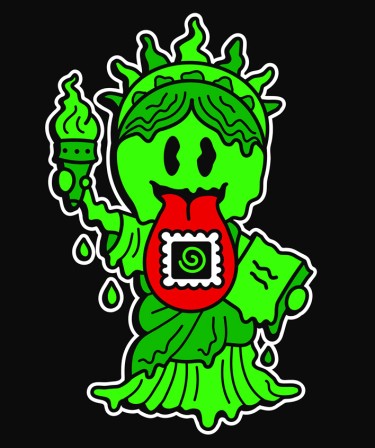
Ah. Altered states of consciousness. For those of us who have experienced it in our lifetime, it’s definitely one of the best things about being human.
These altered states of consciousness simply refer to times when we have mental states that are not ordinary; there are moments when our sense of time and space is distorted due to pleasure, psychedelics, meditation, sexual intercourse, and much more. These days, there has been a lot of interest going on in the world of psychedelics, given that psilocybin as well as ketamine, LSD, and other hallucinogenic drugs are having a second heyday.
Altered states of consciousness can also be called many different things. To other people, these are mystical experiences, a form of ego dissolution, a trip down the rabbit hole, an awakening, a metaphysical experience… the list goes on. But what exactly goes on in the brain?
Despite the growing body of studies and clinical trials done, we still know very little about psychedelics and how they induce altered states of consciousness, which are oftentimes a precursor to healing, therapeutic experiences, and even recreation. Generally speaking, altered states induce significant changes in cognition, time and space perception, and even visions. That said, the altered states of consciousness brought about by psychedelic use are so varied from one person to another, that it can hardly be standardized or pinned down.
This has piqued the curiosity of researchers for a long time.
And recently, a group of investigators had some success in identifying what occurs in the brain when we consume psychedelics, which leads to altered states of consciousness. This groundbreaking study was conducted by researchers from Sweden’s Lund University.
For this study, researchers used live rats as well as a technique they developed to measure electrical signals taken from 128 various parts of the rats’ brains all at the same time. This was done by implanting arrays with microelectrodes and wires into different regions of the brain. The arrays were critical in allowing the researchers to measure local field potentials (LFPs), which are electrical signals taken from thousands of neurons.
Additionally, various psychoactive substances were injected into the rats. This included ketamine, LSD, phencyclidine, and DOI.
“Consciousness is one of those fundamental questions that have always fascinated me. I think that psychedelics is a great tool to study the neural basis of consciousness in laboratory animals, since we share most of the same neural ‘hardware’ with other mammals,” explains Par Halje, study author. Halje is also a neurophysiology researcher and cognitive scientist at Lund University.
They found some fascinating results, most especially the fact that high-frequency oscillations were taking place at the same time in different parts of the brain. They recorded signals from different brain regions that were almost in sync, though delays occurred that were under a millisecond. The one-of-a-kind synchronization was a surprising discovery for the researchers.
“We assumed that a single brain structure was generating the waves and that it spread to other locations,” Halje told Psypost. “But instead, we saw that the waves went up and down almost simultaneously in all parts of the brain where we could detect them – a phenomenon called phase synchronization.” This meant that even though the brain cells were acting differently when exposed to different psychedelic drugs such as ketamine and LSD, it had an impact in the greater activity affecting brain communication, resulting in quick and synchronized signals.
“One might think that a strong wave starts somewhere, which then spreads to other parts of the brain,” explains Halje. “But instead, we see that the neurons’ activity synchronises itself in a special way – the waves in the brain go up and down essentially simultaneously in all parts of the brain where we are able to take measurements,” says Halje. “Likely, this hyper-synchrony has major effects on the integration of information across neuronal systems and we propose that it is a key contributor to changes in perception and cognition during psychedelic drug use,” write the authors.
Other Studies
This area of study is still so mysterious, but the theories we have today are no less as interesting than the phenomenon itself.
Aside from the Lund University study, there have been other efforts to understand what goes on when we get high on psychedelic drugs and go into non-normal mental states. The exact process that occurs when our consciousness gets transported to another dimension may not be clearly understood yet, but a lot of it has to do with 5-HT2A, a serotonin receptor. Many psychedelics including psilocybin, ayahuasca, and LSD activate this receptor upon consumption so using chemicals to block 5-HT2A binding locations will nullify its effects.
One study in particular found that when people consumed LSD, they experienced a blurring of boundaries with other people. When the 5-HT2A receptors were blocked using ketanserin, this effect was nullified. “The real tell-tale, or at least the most impressive nature of a mystical experience, is having this notion of oneness where the sense of subject and object break down,” explains Dr. Matthew Jonson, a behavioral science and psychiatry professor at Johns Hopkins University.
Conclusion
Psychedelics are unique in their ability to interrupt otherwise normal processes in the brain – for the best. Because of that, no other substance on earth can match psychedelics’ ability to help humans heal from a myriad of mental and emotional conditions. How that happens is still largely not understood, but we’re all here for it. Let’s see what the upcoming studies on psychedelics and altered states of consciousness have to say.
IS EVERYONE DOING SHROOMS? READ ON...
OVER 30% OF AMERICANS ARE DOING PSYCHEDELICS, NOW?






